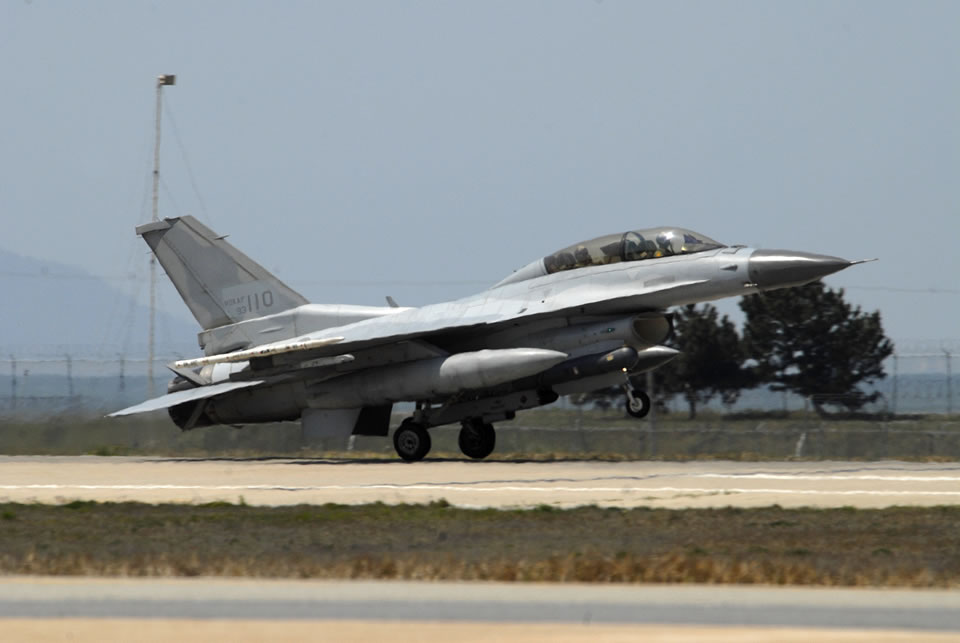
British defense firm BAE Systems Incorporated has been selected as the prime integrator to provide critical upgrades for South Korea’s KF-16 fighter jets. The multi-year contract is valued at an estimated $1.1 billion based on a bid submitted to South Korea’s Defense Acquisition and Procurement Agency (DAPA) by BAE’s United States’ branch office in December. The contract will be processed through the US government’s Foreign Military Sales (FMS) program.
DAPA’s approach to contracting for the KF-16 upgrades is unorthodox. Prime integration bids were submitted to DAPA in December and now, with a bidder finally selected, DAPA will submit a formal Letter of Request (LoR) to the United States to request the US government negotiate a contract with BAE through the FMS program.
In this way, DAPA expects to lock-in performance and service guarantees while keeping contract costs to an absolute minimum. A formal LoR will be delivered to the United States in August and DAPA anticipates finalizing the contract later this year.
The director of BAE’s South Korean office, Joe McCabe, said that the most attractive feature of BAE’s bid was flexibility in the transfer of technology. He went on to say that BAE would request approval from the US government to allow the firm to share source codes for the aircraft’s flight and weapon’s control operational programming with South Korea. Code sharing will make it possible for the Republic of Korea Air Force (ROKAF) to integrate weapons of its own choosing into the aircraft’s weapon’s system at a later date without the need for outside assistance.
The upgrade agreement covers the installation of new state-of-the-art mission computers and advanced operating systems in Korea’s 134 KF-16 fighters. The contract includes replacement of the existing APG-68v5/v7 radar systems, installation of advanced avionics, and upgrading the aircraft’s cables and databuses to MIL-STD-1760 standards. The upgrade package will also include an advanced Ethernet interface offering a high-speed communication interface required to operate Active Electronically Scanned Array (AESA) radar and other state-of-the-art displays and sensors.
Under the provisions of this contract, BAE will supervise and manage the installation of advanced software and hardware that will also include a commercial fire control computer (CFCC), a Link-16 military tactical data exchange network, and a multifunction display component. The upgrade will also provide the equipment needed to allow the KF-16s to fire GPS-guided munitions, AIM 120C Advanced Medium-Range Air-to-Air Missiles (AMRAMM), and Wind Corrected Munitions Dispensers (WCMD).

While BAE will not provide the AESA radar, the firm will exercise oversight to integrate the radar into the aircraft once DAPA announces selection of the radar provider. The main competitors for the AESA purchase are Northrop Grumman and Raytheon.
The ROKAF has long favored an advanced US AESA radar. A South Korean Request for Proposal (RFP) issued in 2011 focused on US systems that included the full spectrum of air/ground radar modes and industrial offsets intended to assist Seoul gain experience in building AESA components. In the past, US policy prohibited the export of sensitive weapon’s technology, but a Defense Security Cooperation Agency (DSCA) September announcement approving an AESA upgrade for Taiwanese F-16s appeared to open the door for South Korea to gain access to AESA technology. It does appear that Seoul’s export request will also be approved with minimal delay.
Northrop Grumman has developed a Scalable Agile Beam (SABR) system that can be delivered as a “drop-in” AESA replacement for existing F-16 radars and Raytheon’s Raytheon Advanced Combat Radar (RACR) is designed to work in a similar manner. DAPA is expected to announce a solicitation for bids to select an AESA supplier early next year.
According to a ROKAF officer, when the KF-16 upgrades are completed, “the KF-16 will have a detection range at least two times longer than now and be able to detect and track multiple targets simultaneously,” and will give the aircraft the capability “to hit key facilities in the enemy zone at longer range.”
The KF-16 is a Korean version of the Lockheed Martin F-16C/D Block 52 fighter built locally under license by Korea Aerospace Industries (KAI) between 1994 and 2004. The ROKAF currently operates a fleet of 134 KF-16s, a force that is a critical component of the South Korean combat air fleet.
The ROKAF also operates 60 F-15K Slam Eagles built by Boeing and plans to acquire an additional 60 fifth-generation stealth fighters during its F-X Phase III competition. This competition pits Lockheed Martin’s F-35 Lightning II Joint Strike Fighter (JSF) against Boeing’s F-15 Silent Eagle and the Eurofighter Typhoon in pursuit of a contract valued at $7.3 billion.
















